

The Gulf of Alaska is a large body of water situated off the southern coast of the US State of Alaska. It stretches from Kodiak Island and the Alaska Peninsula to the Alexander Archipelago. It is said to be an arm of the Pacific Ocean and is known for its vibrant marine life, and is a major shipping route. Bristol Bay separates it from the Alaska Peninsula.
Read along to know 10 facts about the Gulf of Alaska you might not know.
The Gulf of Alaska formed as a result of increased tectonic activity in bygone times. It led to the subduction of the Pacific Plate under the North American Plate.
Approximately 55 million years ago, the Pacific Plate slowly began to slide underneath the North American Plate, a geological process known as subduction. While the Pacific Plate subducted under the North American Plate, it created a deep trench, now called the Aleutian Trench, along Alaska’s southern coast.
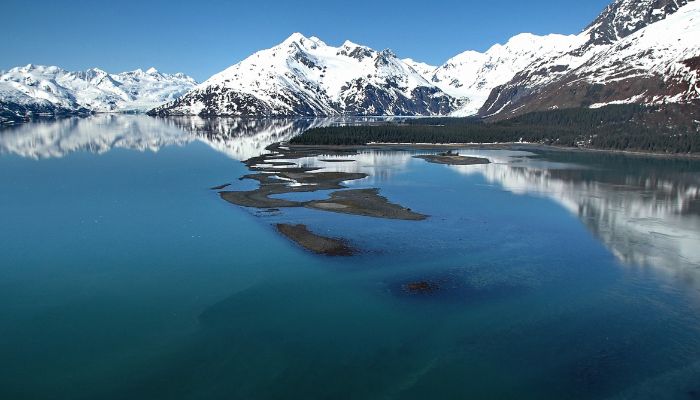

This geological process also resulted in the uplift of the North American Plate, which formed the Alaska Range.
During the period of thousands of years, sediments and rock eroded from the hills and mountains. The material was deposited in the waters along the coast, which created a wide continental shelf. Then as sea levels rose and fell over millions of years, the coastline also changed accordingly, and the Gulf of Alaska took its final form in this manner.
It is still a geologically active region where earthquakes and volcanic activities are quite common. It is also known for its strong ocean currents and harsh weather that create dangerous conditions for ships.
Vitus Bering was an important personality whose explorations of regions like the Bering Strait and Alaska led to the Russians gaining a foothold over North America.
He was an officer in the navy who was later given an important task by Peter the Great. In 1724, he was appointed the leader of an expedition. His aim was to find out if Asia was connected to the North American continent by land routes since Russia wanted to colonise North America and also discover a northeast sea route to China, going around Siberia.
After a delay of three years, he set sail from Okhotsk and crossed the Bering Strait. Hence, he showed that Asia and America were not connected. Then in 1741, he sailed from Siberia and went eastwards into the Alaska Gulf. This was an achievement which made him the first European to see Alaska’s mainland.
Sadly, he could not live long to enjoy the fruit of his success. While returning, his ship was caught in a terrible storm, and ultimately he died of scurvy.
Though corals are usually found in warm and tropical waters, there are some cold-water coral species found in the Alaska Gulf. They live and thrive in depths where the water temperature is stable.
Some prominent coral species found in the Gulf of Alaska are- Primnoa Pacifica, found at depths of 490 ft to 3000 ft. It forms huge dense colonies and provides shelter to a multitude of marine life.
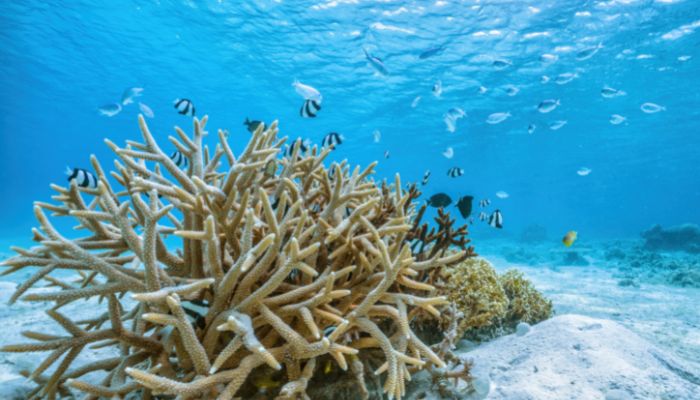

Bubblegum corals are known for their pink and gum-like appearance, which gives them their rightful name. They can grow up to 2 metres tall and can be seen at depths of 200 to 1500 metres.
Bamboo corals have a unique branching pattern and resemble bamboo. They grow to 3 metres and thrive at 300-1500 metre water depths.
Named for their dark black colour, Black corals exhibit a tree-like form and grow to 2 metres in water depths of 150 to 600 m.
Another interesting coral species found here are the octocoral having 8 tentacles like an octopus. Some octocorals include sea pens and sea fans.
Some species of stony corals are also found in the Alaska Gulf. Stony corals have a hard skeleton and include species like Lophelia Pertusa. They can be found at a water depth of 200-1000 m and play an important role in keeping the marine ecosystem healthy.
The corals are an important habitat for fish, invertebrates and other aquatic life forms and aid in nutrient recycling and carbon storage in the oceans. Hence there is an urgent need to preserve the corals from human activities like human trawling, oil and gas exploration, excessive fishing etc.
In 2013, an unexplainable warm water pool was found off the Alaskan coast. Over the course of the next three years, it came to be known as the Blob. It was in the Alaska Gulf and Bering Sea at first before it moved to the south of the Pacific, spreading over 3200 kilometres to Mexico.
It led to an increase in surface water temperatures which were recorded and whose impact on marine life was studied and documented. Many species of fish were affected.
Referred to as a marine heatwave, the blob combined with the El Nino impacted the marine ecosystem and changed the species distribution near the coast.
Although it lasted from 2013 to 2016, its impact is still there. While it lasted, it disrupted the food chain and caused some species to migrate while others starved due to the changes in the distribution of small fish and plankton populations.
It led to the growth of harmful algae like Pseudo-nitzschia that releases a toxin that ultimately causes shellfish poisoning. This led to the closure of shellfish harvesting and badly affected the fishing industry in the region.
It also made some rare diseases come to the surface. For instance, sea star wasting disease became common during this period and killed many sea stars.
One of the biggest glaciers spills out of the Gulf of Alaska coastline. The Malaspina in the southeastern part of Alaska is the world’s biggest piedmont glacier. It lies at the mouth of the Alaska Panhandle and spans approximately 3900 square kilometres. It is 45 km long and 65 km or 40 miles broad.
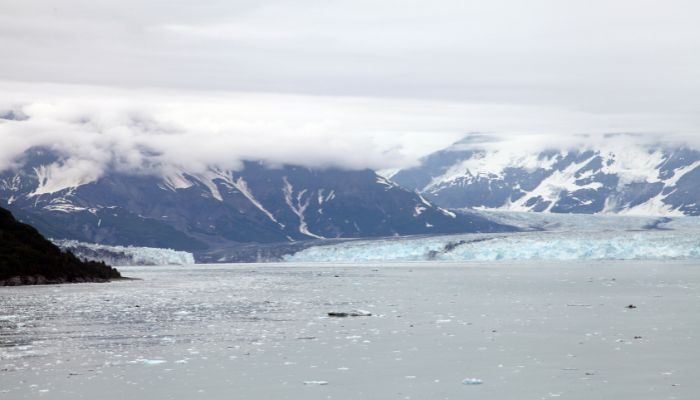

It is made up of the Seward, Agassiz and Marvine or Hayden Glaciers that converge together. They then spill from the Saint Elias mountains on the coastal plain region, which faces the Gulf of Alaska.
Bering Glacier, situated in Alaska, is also the largest in North America. Named after Vitus Bering, it ends in the Vitus lake, around 10 kilometres from the Gulf of Alaska.
The coastline of the Alaska Gulf features stunning scenery. It has mountains, glaciers, forests and plain areas. The coastline is indented by Cook Inlet and Prince William Sound.
The mountains are a part of the Pacific Coast Rangers. They stretch from Alaska to California and include peaks that are more than 10,000 ft high, like Mount St Elias, the second highest in the US. It lies near the border of Canada and Alaska.
The forests are made of Sitka spruce, Alaska cedar, western hemlock and other trees that shelter bears, wolves, eagles etc.
The coastline has tidewater glaciers which protrude into the ocean, making a unique landscape where the ice meets the ocean waters.
These gigantic chunks of ice are quite impressive as they carve out huge ice pieces which fall into the oceans with a thunderous roar, creating a beautiful landscape.
The Gulf of Alaska’s climate varies due to its size and diverse topography. However, it is generally cool, and the region witnesses sufficient rainfall. The coastal region is cool and wet than the interiors. The eastern part of the gulf is warmer than the western side.
In winter, the Gulf of Alaska experiences the formation of strong storm systems that result in heavy rainfall and strong winds. These storms are caused when the northern cold air collides with the warm and moisture-laden winds from the Pacific.
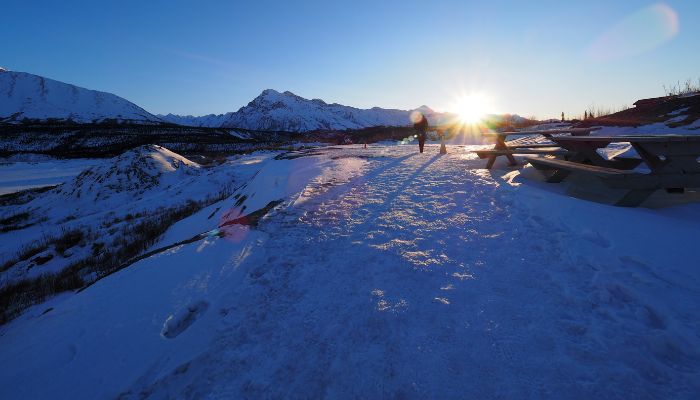

In summer, the Gulf of Alaska sees mild temperatures and less rainfall, though fog and drizzle are common near the coast.
This climate influences the gulf’s marine ecosystem. High rainfall and freshwater runoffs from the rivers create perfect conditions for phytoplankton growth. It is food for many marine species and comes at the base of the food chain.
Lituya Bay, situated on the Gulf of Alaska coast, is the place where the world’s biggest tsunami to be recorded occurred. The catastrophe happened on July 9, 1958. It was the result of a huge landslide that fell into Lituya bay from a height of about 914 m or 3000 ft.
A lot of water was displaced by the landslide, causing a massive wave that surged across Lituya bay and ended on the opposite shore as well. It was around 20 m or 1700 ft tall wave at its highest point and wreck havoc on all things that came it’s way. Trees were destroyed, along with roads and boulders and debris was carried away with it.
Fortunately, only five people lost their lives as most people had already evacuated the place and found higher ground. The event reminds us of nature’s destructive power and the importance of being prepared for such incidences.
The Gulf of Alaska has one of the strongest currents, which transport marine nutrients from the deepest waters across the continental shelf. It also has many bays and estuaries that serve as feeding areas for birds and mammals.
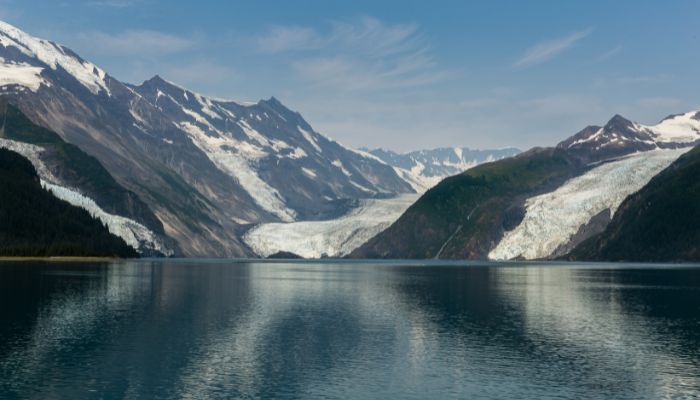

It is home to many coral species, along with many fish and crustaceans. Pacific cod, Alaska salmon, halibut, sockeye, mackerel and pink salmon are found in abundance. Shrimp, tanner crab and king crab also comprise a large portion of the catch.
Many islands like the Montague, Aiaktalik, and Middletown are found in the Gulf. Other popular ones include the Alexander archipelago and the Kodiak archipelago. The latter spans 9,239 square kilometres and is the second biggest island in the US.
Anchorage is the biggest and busiest port in Alaska and functions as a hub for maritime trade to and from the region. It lies at the head of Cook Inlet.
Another major port is Valdez which lies on Prince William Sound and is an important facility handling the majority of oil. It also serves as the southern terminus of the trans-Alaska pipeline system that transports crude oil from Prudhoe Bay.
Located on the Kenai Peninsula, Seward is popular among recreational boaters and cruise ships. Cordova is an important fishing port and supports the regional fishing industry. Other notable ports are Kodiak, Homer and Juneau.
You might also like to read-
Disclaimer: The author’s views expressed in this article do not necessarily reflect the views of The Marine Learners. Data and charts, if used in the article, have been sourced from available information and have not been authenticated by any statutory authority. The author and The Marine Learners do not claim it to be accurate nor accept any responsibility for the same. The views constitute only the opinions and do not constitute any guidelines or recommendations on any course of action to be followed by the reader.
The article or images cannot be reproduced, copied, shared or used in any form without the permission of the author and The Marine Learners.










We believe that knowledge is power, and we’re committed to empowering our readers with the information and resources they need to succeed in the merchant navy industry.
Whether you’re looking for advice on career planning, news and analysis, or just want to connect with other aspiring merchant navy applicants, The Marine Learners is the place to be.